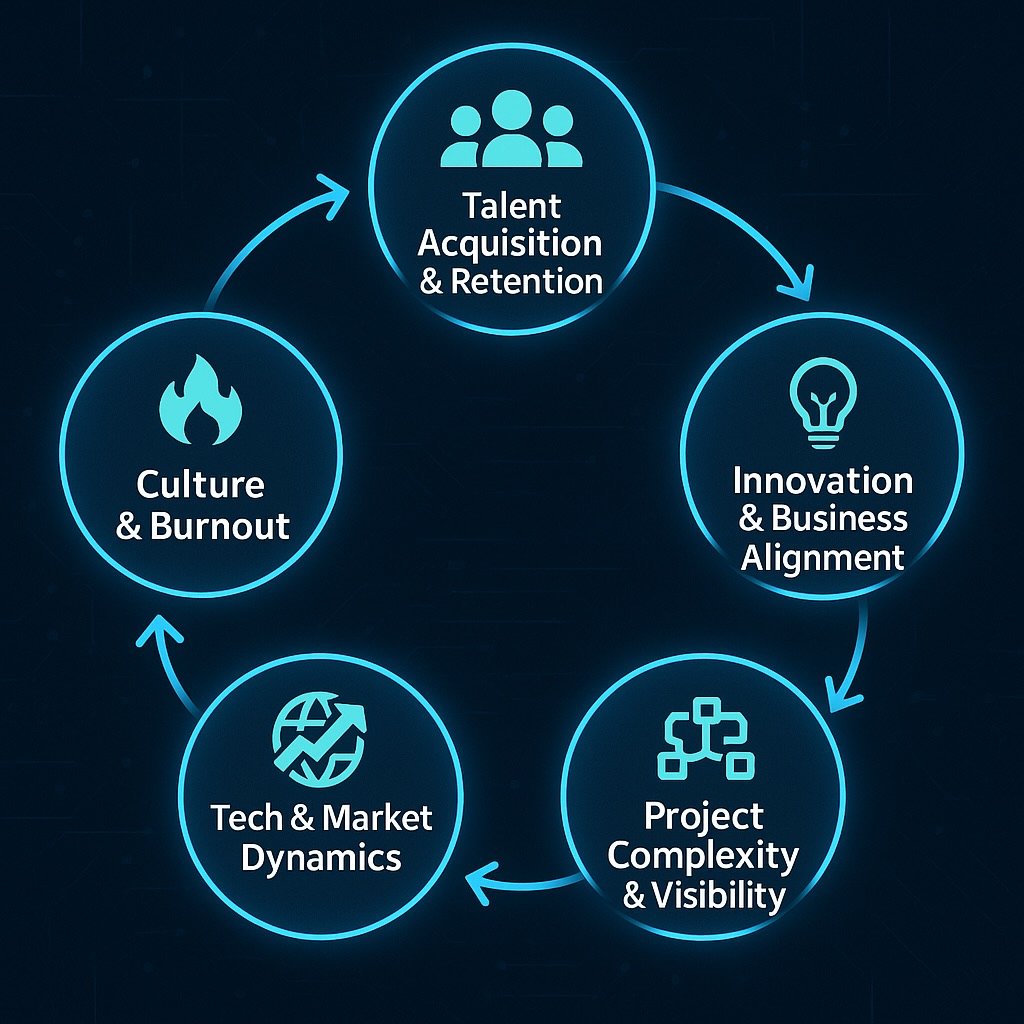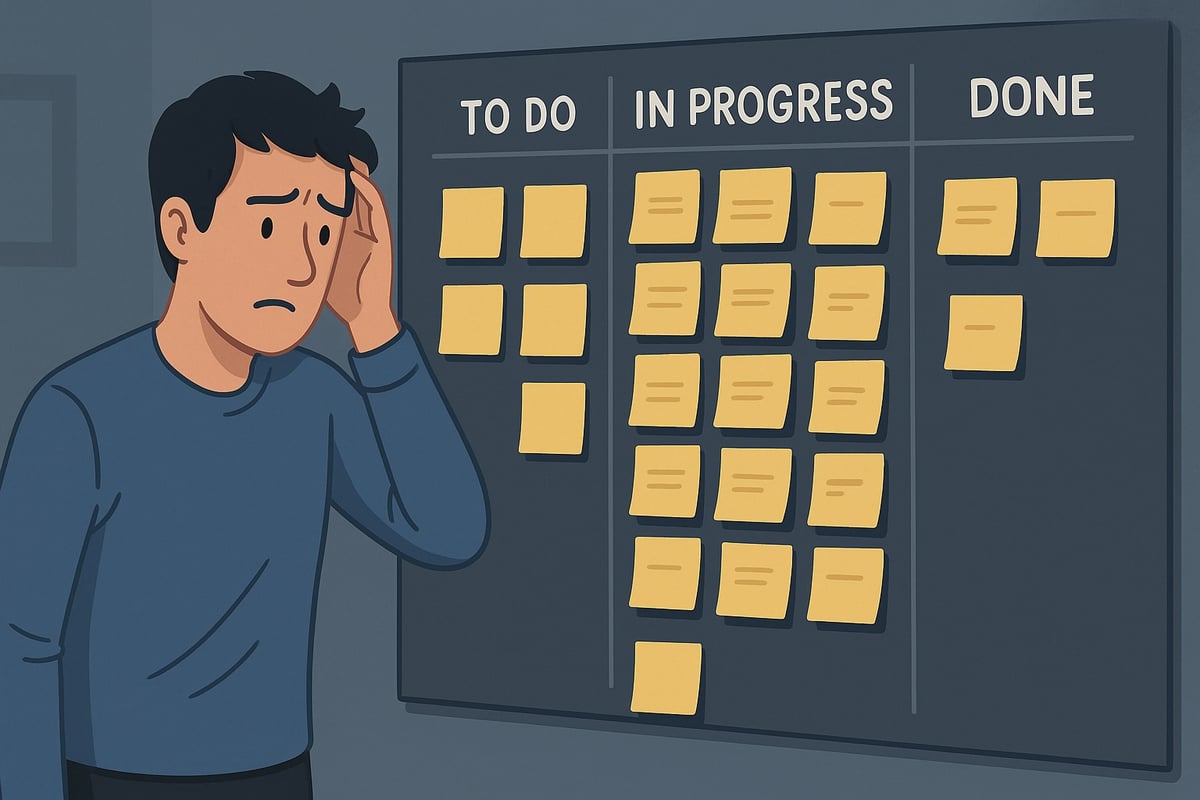Every engineering leader knows that sinking feeling. You check the sprint burndown chart and realize your team isn’t going to hit its deadline… Again. What started as minor slips have compounded, stakeholder patience is wearing thin, and your team’s morale is plummeting.
Here’s what nobody tells you: this happens to almost every team at some point. The myth of the perfectly executed project schedule is in fact a myth. But there’s a crucial difference between teams that spiral into failure and those that recover and deliver: it’s not about never missing deadlines, it’s about how you respond when they slip.
Recognizing the Warning Signs Early
Before rushing to implement recovery tactics, honestly assess where things stand. The earlier you spot trouble, the more options you’ll have for course correction.
Watch for these warning signs:
- Frequent missed milestones: When “we’ll catch up next sprint” becomes a recurring theme
- Quality issues piling up: Bug counts rising faster than resolution rates
- Team communication breakdowns: Silos forming, with engineers working in isolation
- Declining team morale: Increased frustration or that telling silence in standups
- Stakeholder questions intensifying: More frequent check-ins about completion dates
The key is spotting these patterns before they become entrenched. The projects that recover most successfully are those where someone has the courage to say “this isn’t working” early.
Phase 1: Assess and Triage
When a project is at risk, your first 48 hours are critical. This isn’t the time for blame, it’s the time for swift, decisive action to understand the situation.
Start with a comprehensive assessment:
- Technical factors: Are architecture decisions sound? Is technical debt accumulating?
- Process issues: Where are the workflow bottlenecks? Are standups and retros effective?
- Resource constraints: Do you have the right skills on the team? Are there capacity limitations? Is someone being regularly pulled away from the project?
Dig beyond the obvious issues to uncover systemic problems:
- Requirement volatility: Are specs changing weekly?
- Technical debt: Has accumulated shortcut-taking created a development quagmire?
- Estimation errors: Is the team chronically underestimating complexity?
Remember: you can’t fix what you don’t understand. Consider conducting an engineering performance health check to systematically evaluate your team’s effectiveness.
Phase 2: Strategic Scope Reassessment
When deadlines are slipping, take a hard look at your scope. Not everything can be a priority, and pretending otherwise only guarantees disappointment.
The MoSCoW method is particularly effective for categorizing features when time is tight:
- Must-have: Features critical to core functionality—the product cannot ship without these
- Should-have: Important features that add significant value but aren’t critical
- Could-have: Desirable features that can be delivered if time permits
- Won’t-have: Features explicitly deprioritized to create focus
The key to effective prioritization? Accepting that delivering 100% of the most important 60% of features is better than delivering 60% of 100% of features.
When approaching stakeholders about scope changes, come prepared with data:
- Map features on a value vs. effort matrix to show which deliver the highest ROI
- Show the impact of each feature on the critical path
- Present phased delivery options with critical features in earlier phases
Remember: scope reduction isn’t failure, it’s strategic prioritization that maximizes business value.
Phase 3: Break Work Into Smaller, Achievable Milestones
Large, monolithic deadlines are a recipe for project paralysis. When “done” seems impossibly far away, both motivation and productivity plummet.
The antidote is breaking your revised scope into smaller, manageable milestones:
- Deliver complete features in thin vertical slices rather than horizontal layers
- Implement feature flagging to keep in-progress work isolated until ready
- Organize work into 1-2 week sprints with clear, demonstrable outcomes
- Schedule regular demonstrations to show progress and gather feedback early
Projects using 1-2 week delivery cycles are significantly more likely to recover from schedule slips than those with monthly or quarterly milestones. These shorter cycles increase visibility, provide more frequent feedback, and give teams regular wins to celebrate.
This aligns with my core philosophy that consistent, sustainable pacing wins over sporadic sprints.
Phase 4: Identify and Remove Bottlenecks
When a project’s in trouble, your delivery pipeline is almost certainly clogged somewhere. Think of your development process as a highway—traffic only moves as fast as the narrowest lane allows.
Look for these bottlenecks:
- Process bottlenecks: Inefficient workflows, unnecessary approvals, or meetings that could be emails
- Technical bottlenecks: Architecture limitations or integration challenges
- Resource bottlenecks: Skill gaps, capacity limitations, or key person dependencies
- Communication bottlenecks: Information silos or decision delays that leave teams waiting
Once identified, break through these bottlenecks:
- Process optimization:
- Streamline workflows by eliminating steps that don’t add value
- Form cross-functional teams to reduce handoffs
- Set strict WIP limits, starting fewer things leads to finishing more things
- Automation and tooling:
- Implement CI/CD pipelines to eliminate manual build/test/deploy bottlenecks
- Automate repetitive tasks, especially in testing
Focus intensely on removing just 1-2 critical bottlenecks rather than trying to fix everything at once.
Phase 5: Build Quick Wins to Reverse Momentum
When a project is struggling, psychology becomes as important as technology. Teams caught in a cycle of missed deadlines develop a negative momentum that becomes self-reinforcing.
Look for these quick win opportunities:
- High-visibility fixes: Problems that stakeholders immediately notice when solved
- Performance improvements: Enhancements that make users say “wow, that’s much faster!”
- Critical bug resolutions: Those aggravating defects users report repeatedly
Choose wins that are both genuinely valuable and achievable within a week. These aren’t just morale boosters, they’re proof that the team can deliver, creating a foundation for rebuilding trust.
Phase 6: Maintain Transparency with Stakeholders
When deadlines are slipping, the immediate instinct is often to communicate less with stakeholders. This is exactly backward.
The counterintuitive truth: stakeholders are much more understanding of delays they’re warned about in advance rather than surprises sprung at the last minute.
Focus on:
- Proactive updates: Get ahead of questions by addressing issues before stakeholders ask
- Fact-based reporting: Share accurate information without sugar-coating
- Solution-oriented messaging: For every challenge, outline your plan to address it
- Regular cadence: Establish predictable update schedules
Projects with transparent stakeholder communication are substantially more likely to maintain executive support during recovery efforts. Understanding how to effectively communicate with non-technical stakeholders is essential during project recovery.
Turning Crisis into Opportunity
Crisis, properly handled, can be the catalyst for positive transformation that might never happen during “business as usual.”
Project recovery isn’t just about damage control, it’s an opportunity to demonstrate leadership, build team resilience, and fundamentally improve how work gets done. The teams that emerge from recovery are often stronger, more cohesive, and more effective than before.
The difference between failure and success often lies not in avoiding all problems, but in how effectively you respond when deadlines start to slip. Your response in these critical moments defines both the outcome of the current project and your team’s approach to future challenges.
And remember that every moment a project remains delayed has real business costs. Making swift, effective recovery not just an engineering concern but a critical business imperative.
What recovery tactics have worked for your team? Have you turned a project crisis into an opportunity for lasting improvement?








